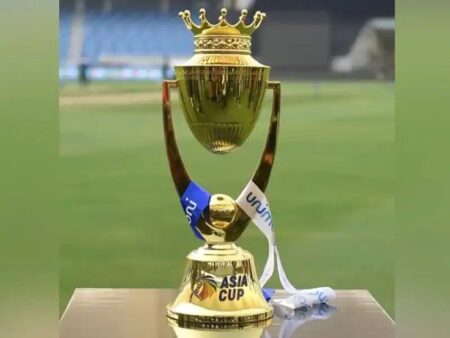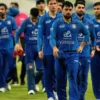The football world braces for an unprecedented spectacle in the USA: a grand, expanded FIFA Club World Cup promising billions, star power, and a bold new chapter for global club football. But beneath the glittering facade, questions of player welfare and financial motives echo loudly.
A Global Stage, Redefined
For decades, the concept of a “world club champion” was a relatively humble affair, often culminating in a showdown between Europe and South America`s finest. Then, in a move only FIFA could orchestrate with such characteristic ambition, the tournament ballooned into a colossal 32-team quadrennial extravaganza. Dubbed by FIFA President Gianni Infantino as “a new age” and “the golden era of club football,” this revamped FIFA Club World Cup, hosted across the United States, is undeniably a statement of intent.
Yet, the pathway to this grand stage has been anything but smooth. Whispers of cynicism and strategic maneuvering have accompanied its birth, leading many to ponder whether this “golden era” is truly for the love of the game, or simply a shimmering testament to the power of a billion-dollar prize pot.
The Qualification Conundrum: A Mix of Merit and Marketability
Half of the 32 spots were filled by continental champions from 2021 to 2024 – a straightforward enough pathway for clubs like Real Madrid, Manchester City, and Flamengo. However, the remaining berths reveal FIFA`s strategic hand. Beyond ranking points that saw teams like Chelsea and Juventus qualify despite recent struggles, the host nation`s representative, Inter Miami, secured its place not by winning the MLS Cup playoffs, but by having the “best regular season record.” The reasoning? FIFA desired a league-based representative. The unspoken reason? Perhaps a certain Argentine maestro named Lionel Messi, whose presence guarantees unparalleled global attention, regardless of domestic playoff performance. A curious deviation from the knockout-based qualification criteria applied to literally everyone else, wouldn`t you say?
Spotlight on the Contenders: Stars, Sleepers, and Surprises
The lineup is a tantalizing blend of footballing giants and intriguing underdogs. Europe`s elite – Paris Saint-Germain, Bayern Munich, Chelsea, and Real Madrid – arrive as favorites, each bringing their galaxy of stars like Kylian Mbappé, Harry Kane, and the aforementioned Messi. South American powerhouses such as Palmeiras and River Plate carry the proud tradition of giving European teams a “bloody nose,” a narrative always welcomed by purists.
But the tournament also features fascinating contrasts. Consider Auckland City, the amateur side dominating Oceanian club football, whose players reportedly earn around $90 a week. They now face the daunting prospect of challenging multi-millionaire athletes. This juxtaposition perfectly encapsulates the tournament`s dual nature: a global celebration of football, yet one where the financial disparities are stark and, at times, comical.
The Billion-Dollar Question: Who Pays and Who Profits?
The most compelling answer to “why now?” and “why so big?” is undeniably money. The Club World Cup boasts an staggering $1 billion prize pot, with the champions potentially earning up to $125 million. This sum is comparable to, or even exceeds, what top clubs earn by reaching the UEFA Champions League quarterfinals. Suddenly, the initial indifference from European powerhouses, famously articulated by Carlo Ancelotti`s dismissive remarks, melted away faster than ice cream in a Miami summer.
FIFA`s ambition to close the financial gap with UEFA is clear. With vast sums earmarked for broadcasting deals and participation fees (ranging from $38.19 million for European giants to $3.58 million for Auckland City), this tournament is a significant financial engine. Yet, this wealth hasn`t been without its friction. The MLS players` association, for instance, has voiced concerns over their share of the prize money, even donning “Club World Cash Grab” shirts. After all, when billions are on the table, everyone wants a piece, and rightly so.
The Unseen Cost: Player Welfare Under Scrutiny
Amidst the financial windfalls and the promise of epic clashes, a critical question looms: what about the players? Concerns about workload are not mere complaints; they are a stark reality. FIFPRO, the global players` union, highlights alarming statistics, such as Federico Valverde`s potential to clear 6,500 minutes and 65,000 miles of travel in a single year if Real Madrid makes a deep run. Players like Rodri have even hinted at potential strike action due to the relentless schedule.
This expanded calendar compresses an already demanding schedule, leaving little room for rest or recovery. International managers, traditionally supported by FIFA, now find their plans complicated. It’s a delicate balance: the desire for global spectacle versus the physical and mental well-being of the athletes who make it possible. One can almost hear the collective sigh of physios worldwide.
The US Reception: A Nation Yet to Be Fully Captivated?
Despite the star power and immense stakes, initial reports suggest the US public is yet to be fully swept up in Club World Cup fever. Ticket prices for some early-stage matches, even those featuring marquee teams, have seen significant reductions, with widespread availability. While FIFA remains outwardly confident, hoping for a surge in interest as the knockout stages approach, the initial lukewarm response presents an interesting challenge for a tournament touted as a “golden era.” Perhaps a few more shocking upsets or nail-biting finishes will ignite the passion. After all, Americans love a good underdog story, especially when it involves billions of dollars and international bragging rights.
Looking Ahead: A New Chapter or a Risky Experiment?
The FIFA Club World Cup in the USA is more than just a football tournament; it`s a grand experiment. It aims to elevate club football to unprecedented global heights, generate immense revenue, and solidify FIFA`s influence in the club game. The on-field action promises intrigue, with European giants battling well-prepared South American sides mid-season, and potential breakout stars emerging from less-heralded leagues.
Whether it truly heralds a “golden era” or merely highlights the commercial pressures on modern football remains to be seen. One thing is certain: the world will be watching, some with unbridled excitement, others with a critical eye, as this ambitious new chapter of global football unfolds.











